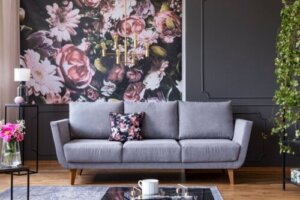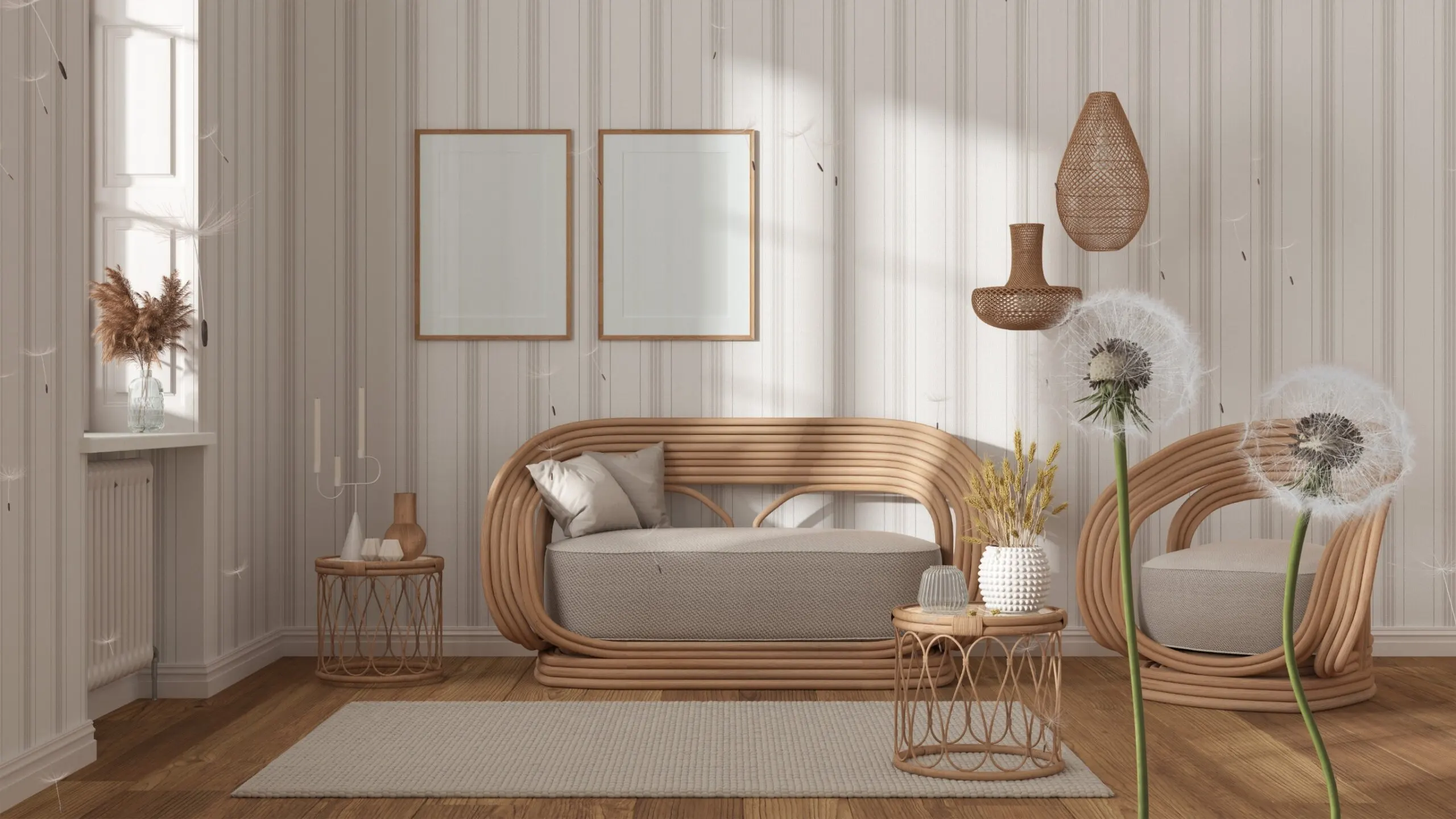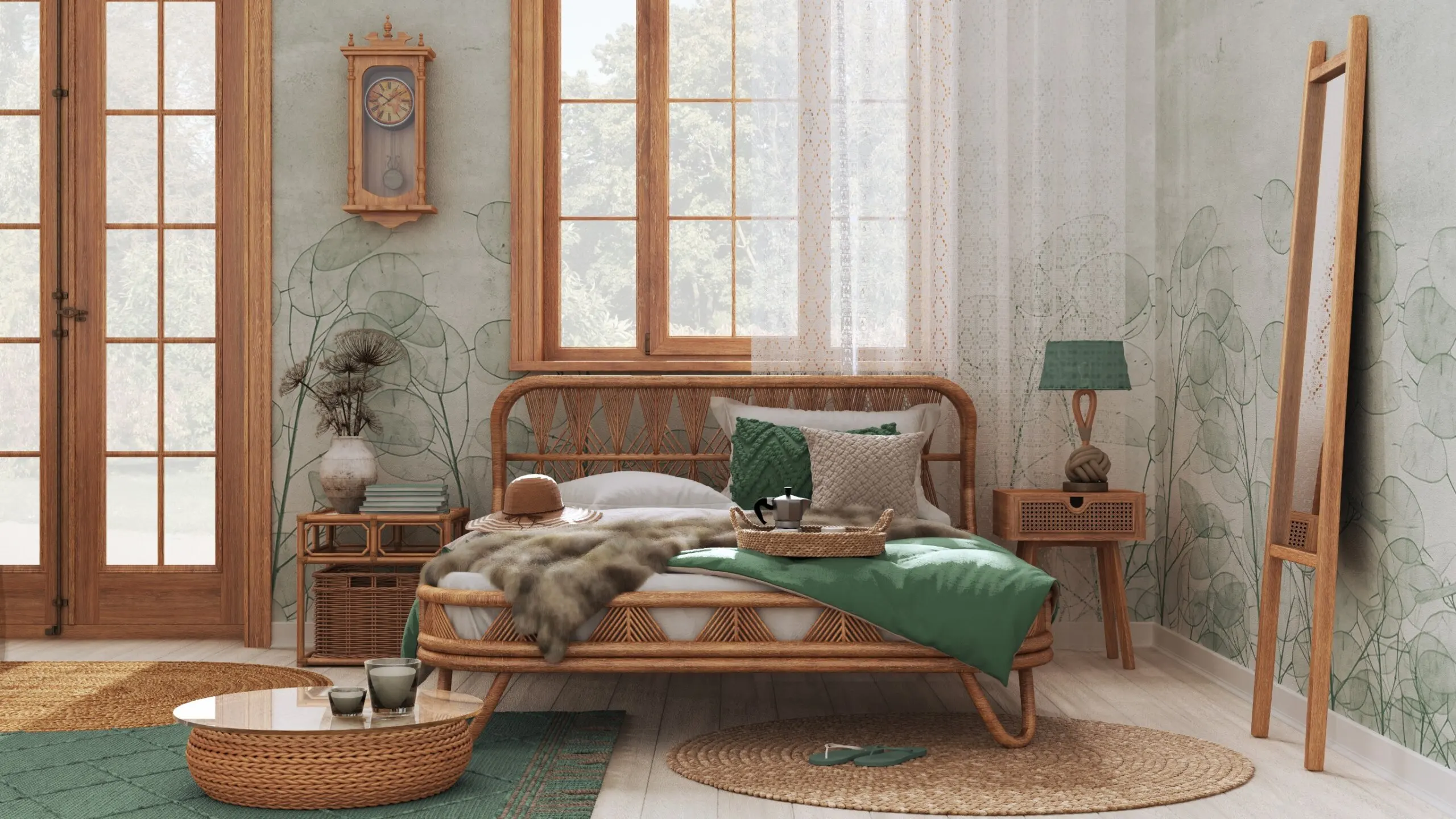How to Integrate Vintage Wallpaper into Your Home Decoration

Decorating the walls of your home is about so much more than just hanging pictures and mirrors. Covering spaces with vintage wallpaper changes the overall look of the rooms, offering airs of elegance, style, and nostalgia.
The trend of wallpapering – typical of the 70s – has recently returned with greater force in interior decoration, offering colors and motifs that easily link to the past, but adapted to the fashion of the present.
This coating method is ideal for camouflaging imperfections in walls. At the same time, it stands out for the simplicity of assembly, for the washable characteristics of some types of paper, and for the long useful life attributable to the quality of the material. Since there’s an infinite number of patterns out there, we’d like to explain why you should choose this vintage decorative option.
What is vintage wallpaper decorating all about?
The word vintage alludes to the past, the antique, and the classic. This concept, as the National Unified Corporation of Higher Education points out, has expanded to the areas of fashion and design in general.
Specifically, the “updated” version of the old has now found a way to enter homes through discreet or very colorful wallpaper prints that give the house psychedelic vibes, pop art, or minimalist details.
The versatility of wallpaper allows custom prints and the combination of patterns, images, and shapes to enliven the area involved. According to expert recommendations, the best results in a vintage decoration are obtained if you cover only a part of the room and paint the rest while bearing in mind that otherwise, it could look excessively overloaded.
You can find vintage wallpapers made with inks and ecological procedures in specialized decoration stores.
Vintage wallpaper designs for the home

Thanks to its practicality, the adhesive wallpaper in all its variations fit perfectly with the novelties, becoming a convenient resource in the embellishment of homes, according to the magazine Ars Bilduma.
Based on this appreciation, it’s common to see different rooms with wallpaper. It’s appropriate for bedrooms, the work area, and the kitchen; the key is in moderation, as it’s all about adding a touch without exaggerating the intention.
Vintage wallpapers can be unicolor, in ranges such as ocher, green, beige, and blue; generally, they are used so as not to saturate. However, the real retro look is granted by patterns such as the following:
- Textured
- Jungle plants
- Floral prints
- Geometric figures
- Horizontal and vertical stripes
We think you may also enjoy reading this article: How to Integrate Geometric Paper into Your Home Decoration
Tips for including vintage wallpaper in your home decor
Successful wallpaper use lies in pinpointing an appropriate area. Do not cover all the walls; on the contrary, choose one with defects or the one you want to highlight.
Also, it’s a good idea to install it as a background for certain furniture; headboards, bookcases, or bars refresh the appearance if they have vintage upholstery behind them. Where you want to delimit spaces, wallpaper is also an excellent ally.
Living rooms in beach and country houses appreciate the style that this kind of wallpaper gives. But there are more ways to integrate it into your home decor.
You can modify the traditional entrance by adding vintage wallpaper to the walls of the foyer. In addition to making a good first impression, its antique character blends in with the classic furniture, which is an advantage if you already have furniture of this cut.
The living room
The living room needs an eye-catching design, and what better way to do it than with a sheet of vintage wallpaper? In this case, it’s advisable to use a wide wall so that the design looks imposing.
The colors have to match the rest of the decoration, although they’re usually chosen in black and white tones due to the timelessness and malleability of these colors when it comes to adjusting to the style of any furniture. Antique botanical prints stand out as much as palms, trees, bamboo, and flowers.
Bedrooms

In the master bedroom, you create a completely antique feel by wallpapering with floral or unicolor designs, as long as you add wood furniture and match the bedding to the palette of the walls.
For the children’s bedroom, classic patterns abound that look wonderful complemented with traditional toys.
The kitchen and dining room
Often, the kitchen is where many gatherings with guests end, so it’s a room that requires special embellishment. And there’s nothing better than cooking in an eye-pleasing environment, which you achieve with wallpaper.
Patterns don’t necessarily have to relate to culinary activity. Place light prints with a watercolor finish, wildflowers, jungle motifs, or abstract graphics.
When wallpapering with vintage adhesives, make sure that the design does not obscure other elements such as tiles and furniture. However, it’s also important to avoid lining the food preparation area and the sink, as steam from the stove and splashes will damage the wallpaper or require meticulous daily maintenance.
Vintage wallpaper creates attractive separations between the kitchen and dining room.
Like this article? You may also like to read: We Recommend 6 Succulent Plants to Decorate Your Home
Make sure you buy good-quality wallpaper
Once you identify the design that matches your tastes and you know which area of the house deserves the change, all that’s left is to carefully apply the wallpaper and ensure proper workmanship. This is because it is important to carefully adhere the film so that air bubbles don’t spoil the look.
Many papers come with adhesive on the back, but for others, you have to prepare the glue. In all cases, the best thing to do is to follow the manufacturer’s instructions.
Finally, remember that maintenance won’t be an issue if the model was manufactured with waterproof technology. If so, simply wipe with a damp sponge. On the other hand, when the paper has no coating or sealing, avoid cleaning with liquids and use a vacuum cleaner.
All cited sources were thoroughly reviewed by our team to ensure their quality, reliability, currency, and validity. The bibliography of this article was considered reliable and of academic or scientific accuracy.
- Bartolomé García F. La popularización del papel pintado en España a lo largo del siglo XIX. Ars Bilduma. Vol. 11. 127-154. España; 2021. https://www.mendeley.com/catalogue/c5209cf7-21f8-353d-9e86-e19942b51daf/?utm_source=desktop&utm_medium=1.19.4&utm_campaign=open_catalog&userDocumentId=%7Bbe8b2416-68b1-4493-b854-809bfb4b3827%7D
- Sarmiento Rodríguez I. El vintage como parte del futuro. Corporación Unificada Nacional de Educación Superior. Colombia; 2022. https://repositorio.cun.edu.co/handle/cun/106
This text is provided for informational purposes only and does not replace consultation with a professional. If in doubt, consult your specialist.








